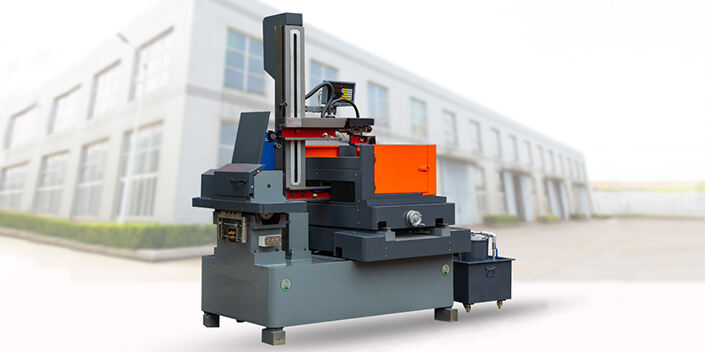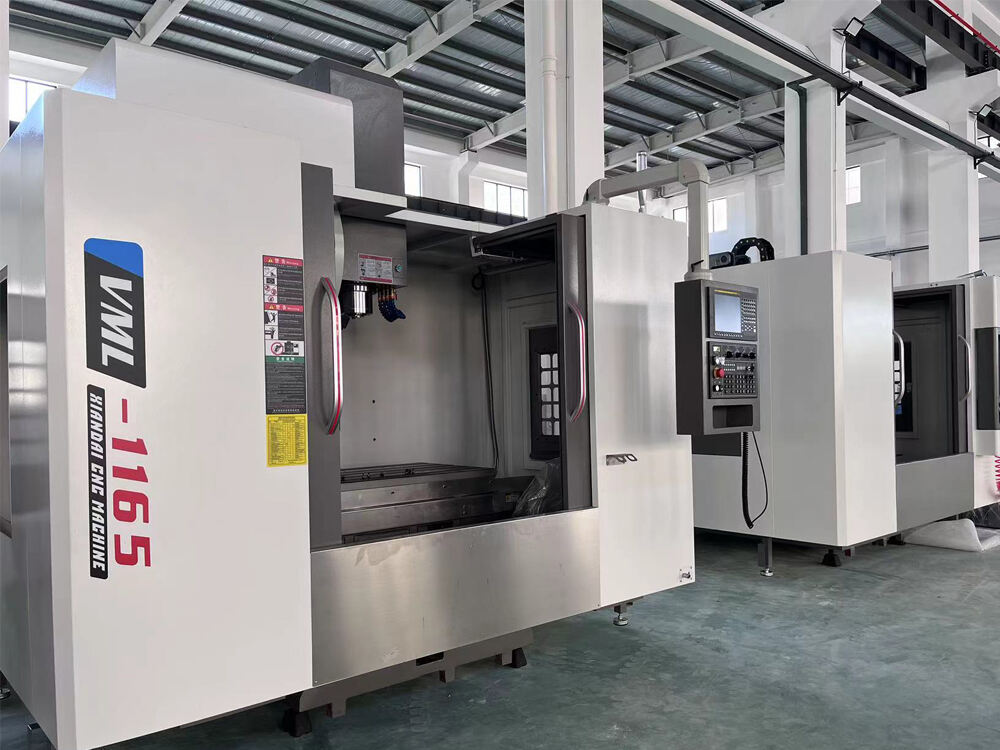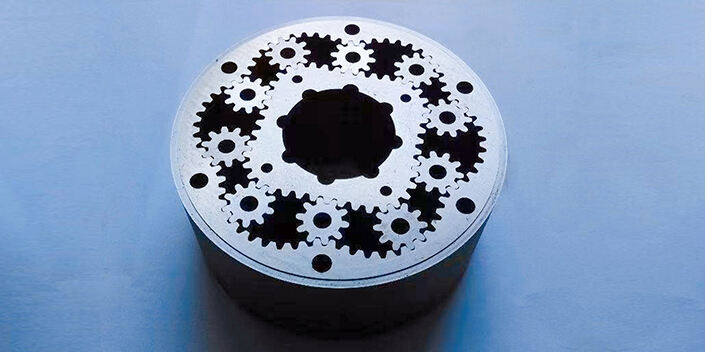Fundamentals of Complex Contour Turning
Defining Contour Turning in Metalwork
Contour turning basically means shaping materials along curves instead of just straight lines, something really important when making complicated shapes in metalworking shops. When we compare this to regular straight turning methods, what happens during contour turning is quite different. The material gets moved around so it follows a specific curved route, which lets machinists create all sorts of fancy details and special profiles on parts. Most of the time, the part spins while the cutting tool stays put, giving access to those fine details that normal turning simply can't reach. Because machines can be made so accurately with these techniques, many manufacturing sectors rely heavily on contour turning whenever they need pieces with unusual or complicated shapes.
Key Differences from Standard Turning
What sets contour turning apart from regular turning is how it handles all sorts of curves and angles. Standard turning basically works for making round, cylinder-like shapes. But contour turning can machine parts with actual curves and complicated profiles that just aren't possible with traditional methods. For industries needing really complex parts, like those found in cars or planes, this flexibility makes a big difference. The main benefit? It breaks free from the boring world of cylinders, letting manufacturers produce precisely shaped components that fit their exact needs. Many shops find they can create much more specialized parts when they switch to contour turning techniques.
Role of CNC Technology in Precision
CNC tech really boosts how precise contour turning becomes. These machines run on computer programs that map out exactly where tools should go, cutting down on mistakes people might make and making sure parts come out the same every time. For shops doing precision metal work, this kind of tech makes all the difference when trying to keep things consistent across batches of good quality products. When working with CNC systems, even complicated shapes get made with pretty much spot-on accuracy. Machinists can stick to those super tight measurements while still getting through complex shapes faster than ever before. Shops that have adopted CNC for contour turning aren't just talking about better results they actually see improvements in what their machines can do day after day, with parts meeting higher standards consistently.
Advanced Techniques for Intricate Shapes
Multi-Axis Toolpath Strategies
Multi axis machining lets shops make really complicated shapes because the machine can move along several axes at once. Traditional 3 axis machines just don't cut it when it comes to complex parts. Modern 5 axis systems allow tools to reach around and access different sides of the workpiece without needing constant repositioning. This makes a big difference for things like turbine blades in aircraft engines or engine blocks for cars, where the cutting needs to flow smoothly across surfaces that twist and turn. When manufacturers have this extra freedom in three dimensional space, they can craft much more detailed components with better accuracy right from the start. The whole process takes less time overall since there's no need for multiple setups, which saves money on labor costs too.
Combining Turning with Wire EDM Finishing
When combining contour turning techniques with wire EDM Electrical Discharge Machining, manufacturers get a powerful way to reach those really precise dimensions and detailed features needed for tough materials. Contour turning basically forms the shape of whatever piece they're working on, while wire EDM cuts through material using controlled sparks between electrodes. This combo works wonders in sectors that demand complicated geometries and super tight specs, think about mold makers who need every millimeter just right. Parts made this way have finishes so smooth and accurate measurements so exact that older machining approaches simply can't match them. For shops looking to push boundaries in metal fabrication, these combined processes open up all sorts of new design possibilities that were previously out of reach.
- The ability of wire EDM to handle hard materials with high precision complements contour turning processes.
- The integration enhances the overall detail and accuracy of the finished part by providing a secondary refining step.
Compensating for Material Springback
Getting the hang of material springback compensation makes all the difference in contour turning when it comes to producing parts with precise measurements and good fit. Springback happens because materials tend to bounce back toward their original form after being shaped, which can mess up dimensions once machining is done. When working with various materials, engineers need to know how they stretch and compress differently. That's why shops often tweak tool paths or change cutting speeds and depths during machining operations. These adjustments matter a lot for making sure finished products actually match what was intended on paper. Without proper compensation techniques, even small errors can lead to big problems down the line in assembly lines where everything needs to fit together perfectly.
- Key considerations involve evaluating material characteristics and applying predictive models to anticipate and counteract potential deviations.
- Implementing these adjustments is crucial in applications where accuracy is paramount, such as in the automotive and aerospace sectors.
Material Considerations & Tool Selection
Hardened Steels vs. Ductile Alloys
The choice of material really affects how long something lasts and how easy it is to machine during production. Hardened steel stands out because it resists wear so well, making it great for jobs that need to last through rough conditions. When parts have to survive harsh environments over time, hardened steel gets the job done. Ductile alloys tell a different story though. These materials cut easier and work better for complex shapes and modifications. A lot of manufacturers find themselves torn between these options depending on what they need from their project. If strength and lasting power matter most, hardened steel wins hands down. But when designers want something that bends without breaking or needs lots of customization, ductile alloys become the go to choice despite being slightly more expensive upfront.
CBN vs. PCD Cutting Tools
When it comes to contour turning operations, picking between Cubic Boron Nitride (CBN) and Polycrystalline Diamond (PCD) cutting tools makes all the difference in getting good results. CBN tools last much longer than other options, especially when working with really hard materials like hardened steels. That's why shops often go with CBN for jobs that need to keep running through long production runs without tool changes. On the flip side, PCD tools cut with incredible sharpness, leaving behind surfaces so smooth they almost don't need finishing work. Many machinists prefer PCD for parts requiring tight tolerances or decorative finishes. Ultimately what works best depends heavily on what the shop is actually trying to accomplish. If the material is super hard and wear resistance matters most, CBN wins out. But for those precision jobs where surface quality counts, PCD remains the top choice despite its shorter tool life.
Coolant Strategies for Heat Management
Good coolant strategies matter a lot in machining because they control heat buildup, something that affects how long tools last and whether parts come out looking good. When there's proper cooling, thermal deformation gets reduced so tools stay sharp longer and parts keep their intended shape and size. Different coolants actually make a difference too. For instance, some coolants work better for certain metals than others, and getting this right helps avoid problems where parts warp after machining. Metalworkers who take time to match coolant types with what they're cutting usually see better results on the surface finish as well. So really, matching coolant choices to specific materials and operations isn't just recommended practice it's practically necessary if shops want consistent quality and efficient production runs.
Overcoming Artistic Metalwork Challenges
Vibration Control in Thin-Walled Pieces
Getting rid of unwanted vibrations matters a lot when dealing with thin walled metal parts. These kinds of materials tend to resonate during machining operations, messing up both precision and final product quality. Shops facing this issue often turn to different damping methods to keep things under control. Some install special vibration absorbers, others tweak their machine configurations, while many simply find ways to better secure the workpiece itself. All these approaches help improve the end result noticeably. When the machining stays stable from start to finish, it makes all the difference in getting those fine contours right and cutting down on costly mistakes that happen when parts warp or deform mid-process.
Achieving Mirror Finishes on Curved Surfaces
Getting those mirror finish results on curved metal surfaces takes some serious skill and patience. The whole process relies heavily on knowing which abrasives work best for different materials and paying close attention during each step of the finishing process so no flaws remain. Fine grinding followed by proper polishing really makes all the difference when trying to achieve that perfect reflective look. Metalworkers need to understand what grits to use at various stages and constantly check their progress under good lighting conditions. For artists working with metal, creating beautiful surfaces matters almost as much as making sure the piece holds together structurally over time.
Electrical Discharge Machining Integration
When combining electrical discharge machining (EDM) with contour turning, shops gain real benefits when making those complicated shapes and fine details that traditional methods just cant handle. The EDM process itself is pretty remarkable because it cuts materials with incredible accuracy, which matters a lot for parts needing tight tolerances or complex geometries. What happens when these two technologies work together? Productivity goes up while design possibilities expand dramatically. Metalworkers find they can create far more elaborate components than before. Jewelers and specialty fabricators especially appreciate how EDM lets them craft intricate patterns and delicate structures in metals like titanium or stainless steel. Some companies report being able to produce designs that would have been impossible just five years ago, all thanks to this combination of old school turning techniques with modern EDM capabilities.
Applications in Modern Metal Artistry
Sculptural Elements in Architectural Metalwork
Complex contour turning techniques play a key role when creating those special sculptural features that really elevate architectural designs. What makes these methods so valuable is their ability to give designers incredible freedom to craft detailed shapes and unique forms that look great while actually holding up structurally too. Look around at contemporary buildings and you'll spot this kind of metalwork all over the place – from eye-catching facades to ornate columns and even interior details where the combination of precise machining and creative flair brings out the artistic side of construction projects. And contrary to what some might think, these decorative elements aren't just there for show. They often serve critical functions in supporting weight distribution and reinforcing structural components across various parts of the building.
Custom Automotive Embellishments
Complex contour turning is making waves in the automotive world, especially when it comes to creating those special touches that make cars stand out both looks-wise and how they perform. Car makers are getting pretty creative these days, crafting everything from fancy front grills to sleek trim pieces and even engine components with some seriously advanced metalworking skills. The cool thing about these detailed metal creations? They don't just look good on paper (or in showrooms). Many actually help cars run better too, either by cutting down drag or shaving off unnecessary pounds. With more people wanting their ride to be one-of-a-kind these days, the ability of contour turning to deliver precise results across different materials means this technique has become something of a holy grail for shops looking to stay competitive in today's market.
Precision Instrument Components
When making precision instruments, contour turning plays a major role in creating components that meet exacting standards. Medical device manufacturers and aerospace engineers depend on this method because they simply cannot afford errors when dealing with tight tolerances. Take surgical tools for instance – even microscopic deviations can mean the difference between successful procedures and catastrophic failures. Similarly, parts used in aircraft navigation systems need to be spot on to function properly at altitude. What makes contour turning so valuable is its ability to deliver consistent results across complex geometries. While some might question whether traditional methods could work just as well, the reality is that modern manufacturing demands levels of precision that only techniques like contour turning can consistently achieve. This explains why so many industries continue investing in these specialized machining processes despite their higher costs.





